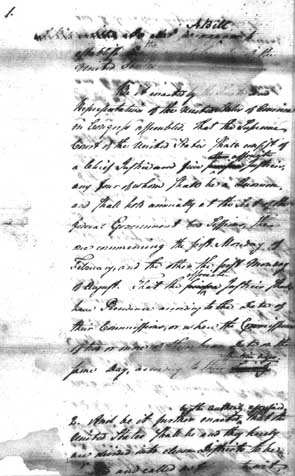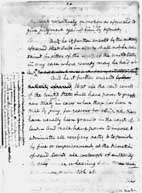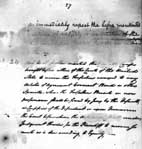 Page 1, Senate Draft of the Judiciary Bill [S-1] (Courtesy of the National Archives) |
|
The federal judiciary today retains essentially the same structure created by this act in 1789. The Senate assumed responsibility for drawing up the legislation necessary to enable the Supreme Court and other federal courts to function. On June 12, 1789 a committee, made up of a senator from each state, reported the Judiciary Bill. While all of the committee members participated in the bill's creation, Oliver Ellsworth of Connecticut, William Paterson of New Jersey, and Caleb Strong of Massachusetts were the most influential. These three men served as a drafting subcommittee, the first such committee in the federal Congress. These pages illustrate how the subcommittee divided up the responsibility for drafting the bill. The first page shows the first two of ten sections which set up the judicial structure and were drafted by Paterson. Page 20 of the manuscript illustrates sections 10-24, which relate to jurisdiction
and were authored by Ellsworth. This page is particularly interesting as the words
following the asterisk in the margin were omitted when the bill was printed (see below).
The error went undetected and the words did not appear in the final act. Also evident
is the extensive water damage which occurred during the many years that the manuscript
lay in an attic of the Capitol at Washington.
|
|
| Table of Contents |

